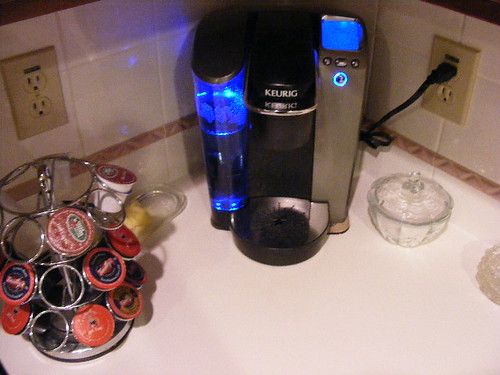Quote:
Originally Posted by jules650 /img/forum/go_quote.gif
Some people find using metal in the brewing method imparts a metallic taste. I think the best material by far is glass.
|
Maybe it's the acid or some other chemical. Stainless steel is chemically resistant, but not inert.
For example...
"The electrodes used for electroporation, electrofusion, and electrotransfection, as well as in electrochemotherapy should not interact with the object and release electrolysis products. We studied how far the stainless steel electrodes fulfil these requirements. The results showed that in the case of the exponential electric pulses with amplitude of 3 kV cm−1 and time constant of 0.5 ms, the stainless steel electrodes released ferrous ions to a concentration of several micromoles per liter. We determined experimentally the dependence of the amount of the released ferrous ions on the pulse parameters and on the ionic strength of the medium. It was shown that the released ferrous ions should not be ignored. They could be of importance for the bleomycin electrochemotherapy."
Or maybe...
"There is some dispute over whether the corrosion resistance of stainless steel can be enhanced by the process of passivation. Essentially, passivation is the removal of free iron from the surface of the steel. This is performed by immersing the steel in an oxidant, such as nitric acid or citric acid solution. Since the top layer of iron is removed, passivation diminishes surface discoloration. While passivation does not affect the thickness or effectiveness of the passive layer, it is useful in producing a clean surface for a further treatment, such as plating or painting. On the other hand, if the oxidant is incompletely removed from the steel, as sometimes happens in pieces with tight joints or corners, then crevice corrosion may result. Most research indicates that diminishing surface particle corrosion does not reduce susceptibility to pitting corrosion."
Okay, maybe something a little more intelligible...
"Nickel may be found in prepared foods (tinned foods) at markedly higher concentrations than the safe threshold laid down for hypersensitive patients. Some foodstuffs cooked in stainless-steel utensils attack the metal and thus contain much more nickel than when enamel or aluminum saucepans are used. Among the natural organic acids which may be responsible for dissolving stainless-steel, oxalic acid is the most active at equivalent concentrations."
Or, uhm... well... There *is* acid in coffee...
Coffee Chemistry and Acidity
Well, maybe I can't tell pKa from a bose tripod, but coffee made in glass definitely tastes better to me.























